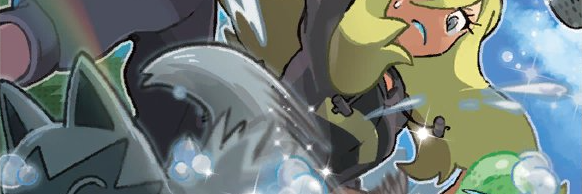
@coriander my experience is that consuming and thinking about art does more for your art style than actually making art does, unless the thing holding your art style back is “not being good at making art”
« Ontologies which previously required minutes or hours to classify can often by classified in seconds by HermiT, and HermiT is the first reasoner able to classify a number of ontologies which had previously proven too complex for any available system to handle. » well i guess we¦re quickly trucking into that second category huh
@unspeakablehorror let’s say it’s so that when users filter their search to only show images, they get back a list which only shows images
@unspeakablehorror i think it is a formal specification, but one that encompasses physical resources in addition to digital ones
@unspeakablehorror personally i would say a polaroid is formally an image, not just informally :P
@gaditb @cpsdqs yes so basically there are two situations:
• you want to identify something WITH all its cultural trappings. for example, you want to cite “the standard that WHATWG currently calls HTML”. the DNS is pretty good at this. but these URIs are inherently fragile, because cultural trappings change. HTML used to be specified by W3C, not WHATWG. the URL changed when a different organization took over
• you want to identify something WITHOUT all its cultural trappings. you just want the thing. these URIs can be very stable, and increasingly stable the more precise you get about “the thing”. but you can’t dereference these identifiers, because they don’t encode any social/cultural information about how to access the identified resource
the idea behind DOIs, ARKs, etc is that you create identifiers of the second type, and then maintain a registry which links them to identifiers of the first type. this requires out-of-band information which cannot be encoded in the URI (like, who maintains the registry? this could change, and has to be allowed to change without changing the URI). but it lets you can bridge the gap between identifiers which are stable and identifiers you can use
@unspeakablehorror what about physical resources? is a polaroid not be an image, because it has no computerized encoding?
@unspeakablehorror what is your definition of “format”?
@unspeakablehorror on mastodon gifs are actually served as webm format. do you think that is fundamentally a different type of thing just because it isn't image/gif?
@unspeakablehorror why do all gifs have to have the same format type?
@unspeakablehorror do you think pre-talkie motion pictures are not videos, then?
@gaditb @cpsdqs no, that is what i’m saying
i would be willing to bet the vast majority of http(s) identifiers ever assigned are not, today, dereferencable
and the probability that an identifier be dereferencable decreases with the stability of the thing being referred to. a magnet link, which refers only to a specific sequence of bytes, stops being dereferencable the moment that specific sequence of bytes stops being known
it's not possible to have a URL which refers both to a specific thing and which can survive entropy. this is not true of “non-frozen” URLs. even if you lose the original representation of a thing at a given http(s) URL, you can serve something close, or a placeholder for that thing, or an updated version of that thing. the less frozen the URL is, the more dereferencability can be maintained; they are competing concerns
i’m not saying they aren’t effective examples but i do take small amounts of psychic damage every time i read the Owl 2 specification
@coriander (also apparently they were sponsored by ProWritingAid hence so much emphasis on AI editing tools)
@coriander i mean nanowrimo makes money based on the number of people who participate so of course they want to lower the bar for “willing to attempt to write a 50000 word novel” as much as possible
@gaditb amusingly i think the most practical application for knowing the “heat” of URLs is with webcrawlers so they know how often to recrawl
- Header
- Delinquent (BREAKpoint 98a) by Megumi Mizutani
Administrator / Public Relations for GlitchCat. Not actually glitchy, nor a cat. I wrote the rules for this instance.
“Constitutionally incapable of not going hard” — @aescling
“Fedi Cassandra” – @Satsuma
I HAVE EXPERIENCE IN THINGS. YOU CAN JUST @ ME.
I work for a library but I post about Zelda fanfiction.
For the time being, this is mostly a mirror of <https://status.ladys.computer/>. Want to get in touch? E·mail me!
